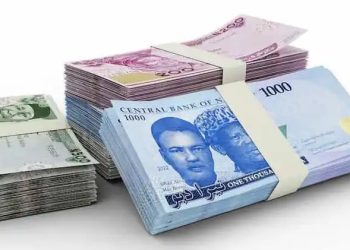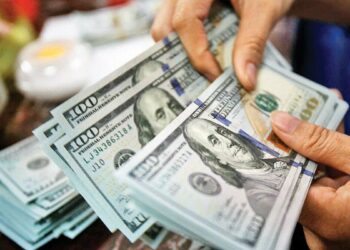In a significant shift in market dynamics, the U.S. dollar plummeted to a fresh four-month low on Thursday following indications from the Federal Reserve that its interest-rate hike cycle has concluded, and lower borrowing costs are on the horizon in 2024.
Federal Reserve Chair Jerome Powell, during Wednesday’s Federal Open Market Committee (FOMC) meeting, conveyed that the historic tightening of monetary policy is likely over, with discussions on reducing borrowing costs now in view. Powell’s statements, along with the unanimous projections of policymakers foreseeing a decrease in borrowing costs in 2024, sent a dovish signal to the market.
RBC strategist Blake Gwinn remarked, “Every vehicle of Fed communication – the statement, the dots, and Powell’s press conference – was unambiguously dovish. This shift was perhaps most obvious when Powell admitted that the committee discussed the appropriate timing of cuts at the meeting.”
The U.S. dollar index, measuring the currency against a basket of currencies, tumbled to 102.42, its lowest since mid-August. It closed down 0.3 percent at 102.57, reflecting the impact of the dovish sentiments expressed by the Fed.
Market expectations now indicate a more than 85 percent chance of a rate cut in March, according to the CME FedWatch tool, a substantial increase from the 40 percent probability a day before. Traders are pricing in a one-in-five chance of the Fed cutting rates next month.
In the wake of these developments, the Swiss National Bank (SNB) held rates steady at 1.75 percent, as anticipated, resulting in the Swiss franc maintaining its weaker position against the euro but slightly strengthening against the softer dollar.
Norwegian crown experienced a rise against both the euro and the dollar following an unexpected 25 basis points rate hike by the Norges Bank to 4.5 percent. The bank hinted that this level would likely be maintained for an extended period.
Investors are now turning their attention to announcements from the Bank of England (BoE) and the European Central Bank (ECB). While both are expected to keep interest rates unchanged, the market is keenly observing any signals regarding the possible easing of policies in 2024.
The yen continued its upward trajectory against the dollar, reaching its highest level since July 31 at 140.95 yen per dollar. It closed up around 0.9 percent at 141.58 per dollar.
In the cryptocurrency market, bitcoin experienced a 0.3 percent decline, settling at $42,772. Meanwhile, traditional currencies like the Australian dollar and the New Zealand dollar exhibited strength. The Australian dollar surged to over a four-month high at $0.6728 following robust domestic net employment data. The kiwi rose over 1 percent against the greenback, reaching as high as $0.6249, despite the unexpected contraction of the New Zealand economy in the third quarter.
As market dynamics continue to shift, traders are recalibrating their positions, and global central banks are under increasing scrutiny for their guidance on future policy actions in the ever-changing economic landscape.











